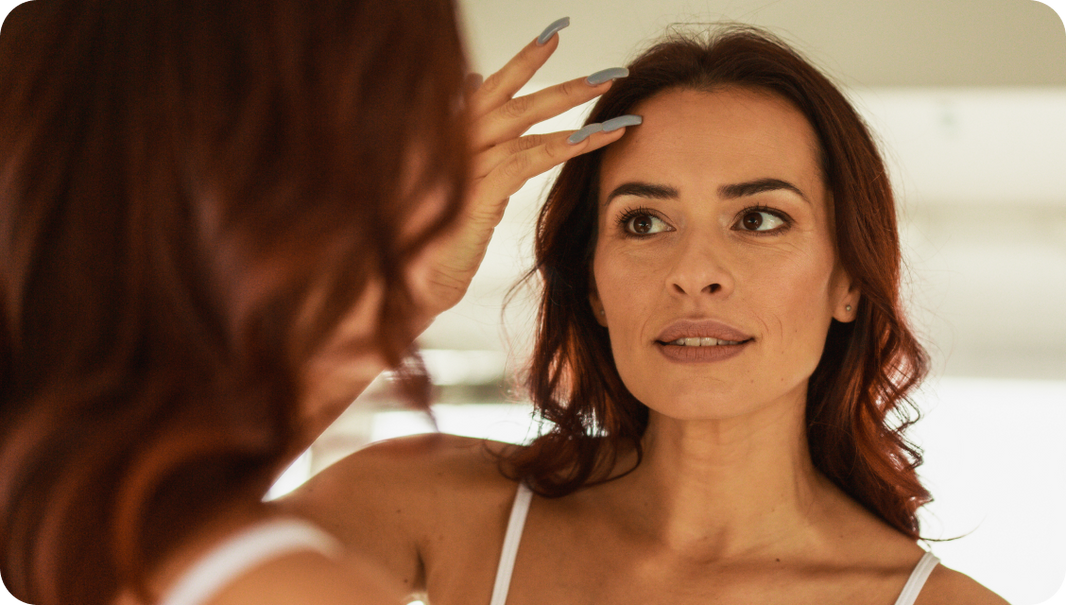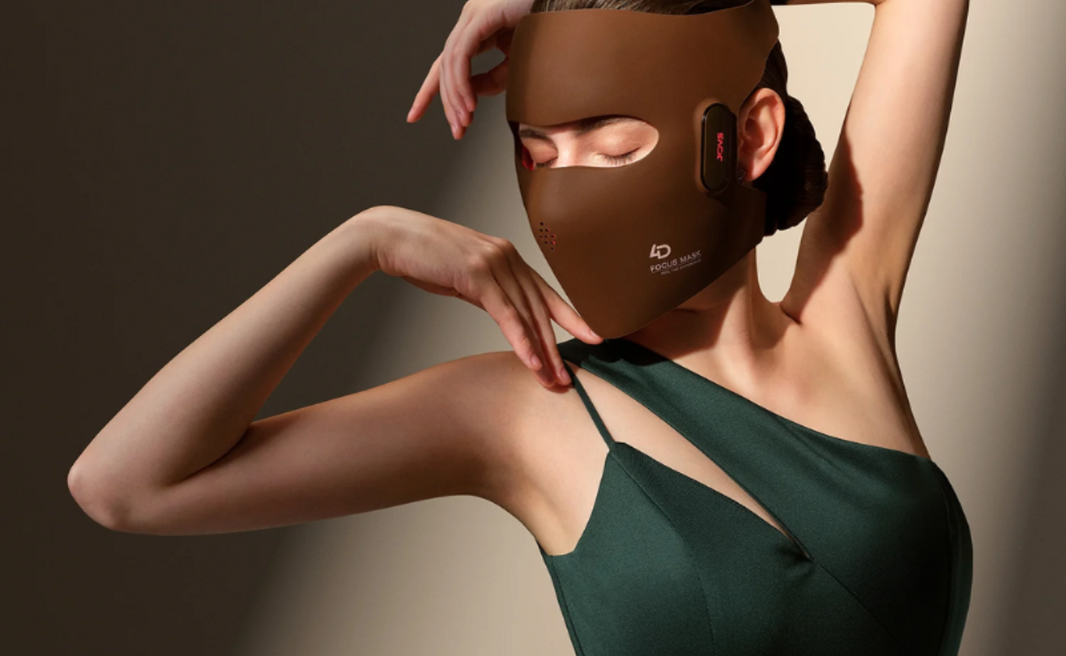Dark spots and hyperpigmentation are common skin issues many people struggle with. These issues can arise from factors like sun damage, leftover acne marks, or shifts in hormones. While these marks aren’t harmful, they can affect how even your skin tone looks. This guide will walk you through a skincare routine to help fade dark spots step by step. With consistent use of the right products, and a routine tailored to your skin type, you can improve the appearance of your skin.
What Are Dark Spots and Hyperpigmentation?
Dark spots, also called hyperpigmentation, happen when the skin produces excess melanin. Melanin gives skin its color, but an excess can lead to darkened areas. Several common triggers can lead to this:
- Sun Exposure: UV rays increase melanin production to protect the skin. But over time, this can lead to uneven patches known as sunspots.
- Acne Scars: After a breakout, the skin may overproduce melanin as it heals. This results in dark marks called post-inflammatory hyperpigmentation (PIH).
- Hormonal Changes: Melasma, a type of hyperpigmentation, can be triggered by pregnancy or taking birth control pills.
- Aging: As we age, the skin’s natural ability to repair itself slows down, leading to age spots due to sun damage.
These marks commonly develop on the face, neck, and hands. Although they aren't harmful, many seek ways to minimize their visibility to improve skin tone.、

Step-by-Step Skincare Routine with Professional Insights
Each step in this routine has a specific function. Here’s why each step is important for targeting dark spots and hyperpigmentation, and how it works scientifically.
1. Cleansing
Washing your face clears away dirt, oil, and other debris from the skin. It gets your skin ready for the following steps in your skincare regimen.
-
Why It’s Important: Washing your face removes dirt that can block pores and cause irritation. Inflammation can make dark spots worse by causing post-inflammatory hyperpigmentation (PIH).
-
Scientific Explanation: Cleansers containing salicylic or glycolic acid work by removing dead skin cells through exfoliation. Salicylic acid penetrates deep into pores, removing excess oil, while glycolic acid breaks down dead skin cells on the surface, promoting a smoother, clearer complexion.
For Different Skin Types:
- Oily Skin: Use a foaming cleanser with salicylic acid to control oil and prevent acne, which can cause pigmentation.
- Dry Skin: Choose a mild, moisturizing cleanser containing glycerin or hyaluronic acid to retain hydration.
- Combination Skin: Opt for a cleanser that balances oil control and keeps dry areas hydrated.
- Sensitive Skin: Go for a fragrance-free cleanser with calming ingredients like aloe vera or chamomile to prevent irritation.
2. Exfoliation
Exfoliating helps remove dead skin cells and promotes cell turnover. It lightens the complexion and gradually diminishes dark spots.
-
Why It’s Important: Dead skin cells can accumulate and make your skin look dull. Regular exfoliation clears away these dead cells, encouraging new, healthy cells to surface. This accelerates the fading of dark spots by bringing fresh, unpigmented skin to the top.
-
Scientific Explanation: Chemical exfoliants, such as AHAs and BHAs, break down the connections between dead skin cells, helping them naturally slough off. AHAs, like glycolic acid, are water-based and work on the surface layer of the skin. BHAs, like salicylic acid, are oil-based and dive into pores to remove excess oil and dead skin buildup.
For Different Skin Types:
- Oily Skin: Exfoliate 2-3 times a week with chemical exfoliants like glycolic acid or salicylic acid. These help remove oil and prevent breakouts, reducing the risk of pigmentation.
- Dry Skin: Use enzyme-based exfoliants once a week. These are gentler and won’t strip away moisture.
- Combination Skin: Use exfoliating products twice weekly that manage oil and maintain skin moisture.
- Sensitive Skin: Use mild enzyme exfoliants or low-strength lactic acid to avoid irritation while still promoting cell turnover.
3. Treatment Serums
Serums are key in any routine targeting pigmentation. They are packed with potent ingredients that reach deep layers of the skin and target dark spots directly.
-
Why It’s Important: Serums provide potent ingredients that minimize melanin production and enhance skin brightness. They work to fade current dark spots and block new ones from developing.
-
Scientific Explanation:
- Vitamin C: A strong antioxidant that reduces oxidative stress and inhibits tyrosinase, an enzyme that plays a role in melanin production.
- Niacinamide: Known to reduce inflammation and prevent the transfer of melanin to skin cells. It also helps improve overall skin texture.
- Retinoids: Increase cell turnover, pushing out pigmented skin cells and promoting the formation of fresh, evenly-toned skin.
For Different Skin Types:
- Oily Skin: Use serums with niacinamide to control oil and Vitamin C to brighten skin.
- Dry Skin: Opt for Vitamin C and hyaluronic acid serums to fade dark spots while keeping skin hydrated.
- Combination Skin: Use niacinamide for oil control and Vitamin C for overall brightening.
- Sensitive Skin: Choose azelaic acid or low-concentration Vitamin C serums to avoid irritation while targeting pigmentation.
4. Hydration & Moisturization
Moisturizing helps maintain the skin’s moisture barrier and prevents irritation, which can worsen pigmentation.
-
Why It’s Important: Maintaining a well-moisturized skin barrier is crucial for keeping your skin healthy. When the skin is dry or irritated, it becomes more prone to inflammation, leading to post-inflammatory hyperpigmentation (PIH). Moisturization locks in hydration and allows treatment products to work more effectively.
-
Scientific Explanation: Moisturizers containing ceramides help reinforce the skin's lipid barrier, locking in moisture. Hyaluronic acid works as a humectant, attracting water to the skin and keeping it supple and hydrated.
For Different Skin Types:
- Oily Skin: Opt for a water-based, non-greasy gel moisturizer that contains hyaluronic acid to hydrate your skin without blocking your pores.
- Dry Skin: Choose a rich, creamy moisturizer with ceramides and shea butter to deeply nourish and repair the skin’s moisture barrier.
- Combination Skin: Use a combination of gel moisturizers in oily areas and cream-based products for drier patches.
- Sensitive Skin: Choose moisturizers that are gentle, free of fragrances, and contain ceramides to shield the skin from irritation.
5. Sun Protection (Sunscreen)
Sun protection is the most important step in preventing dark spots from getting worse. Without it, UV rays can darken existing spots and create new ones.
-
Why It’s Important: Brief exposure to sunlight can trigger a rise in melanin production. Daily sunscreen use prevents new pigmentation and protects the progress made by other skincare treatments.
-
Scientific Explanation: Broad-spectrum sunscreens shield the skin from both UVA and UVB rays. Mineral-based sunscreens, like those with zinc oxide and titanium dioxide, work by bouncing UV rays away from the skin, creating a physical shield to prevent sun harm.
For Different Skin Types:
- Oily Skin: Use a matte, non-comedogenic sunscreen with SPF 30+ to prevent shine and acne breakouts.
- Dry Skin: Opt for a sunscreen that hydrates, containing ingredients such as glycerin or squalane for added moisture.
- Combination Skin: A lightweight, broad-spectrum sunscreen will protect all areas of the face without making it greasy.
- Sensitive Skin: Zinc oxide and titanium dioxide sunscreens are mild on the skin and shield it from UV rays without causing irritation.
Advanced Treatments: JOVS 4D Laser Light Therapy Mask
If you're looking for a highly effective solution to reduce dark spots and hyperpigmentation, light therapy is a proven method. Red light therapy reduces pigmentation, promotes collagen growth, and improves skin tone overall.
Recommendation: The JOVS 4D Laser Light Therapy Mask is designed to target pigmentation using FPT Ultra-Narrow Laser Technology. This mask utilizes a powerful 1064nm infrared laser that penetrates deeper into the skin layers compared to traditional LED devices. It stimulates cellular repair, helping fade dark spots and restore a more even skin tone.
Key Features and Benefits:
- 1064nm Infrared Laser: Effectively reduces pigmentation by targeting deep skin layers, encouraging collagen production, and fading dark spots.
- Multiple Wavelengths: The device combines several laser wavelengths to address a variety of skin concerns, from wrinkles to pigmentation and redness.
-
Three Therapy Modes:
- Soothing Mode reduces redness and inflammation.
- Standard Mode targets dark circles and lightens pigmentation.
- Deep Mode promotes deeper wrinkle reduction and tightens the skin.
- Non-Invasive and Convenient: There’s no recovery time needed, so you can easily fit it into your everyday routine.
- Comfortable Design: Made from food-grade silicone, it fits comfortably and is lightweight for everyday use.
Lifestyle Adjustments
Making small lifestyle changes can support your skincare routine:
- Diet and Hydration: Consuming antioxidant-rich foods and staying well-hydrated can enhance skin health and reduce the risk of further pigmentation.
- Avoiding Triggers: Harsh skincare products, stress, and poor lifestyle habits can worsen pigmentation. Prioritize mild skincare and support it with a balanced lifestyle.
- Consistency is Key: Results take time, so stay consistent with your skincare routine. Fading dark spots can be a slow process, often requiring several months to notice visible changes.
Call to Action
If you're ready to take control of your dark spots and hyperpigmentation, it’s time to start a targeted skincare routine. Sticking to your routine is essential for noticeable improvement. Incorporate the steps outlined here and make the JOVS 4D Laser Light Therapy Mask a part of your routine for professional-grade results at home.
Have you tried any of these steps? Share your experience with us and explore more solutions to achieve your best skin. We're here to support you at every stage!
FAQs
-
Will combining several brightening serums help dark spots fade faster? While it may seem tempting to combine several brightening serums, using too many active ingredients can overwhelm or irritate the skin, leading to more pigmentation or damage. It’s better to use a single effective product with ingredients like Vitamin C or niacinamide, and focus on consistency for better results.
-
How important is lifestyle in preventing dark spots and hyperpigmentation? Lifestyle plays a key role in preventing dark spots. Diet, staying hydrated, managing stress, and limiting sun exposure play a crucial role in maintaining healthy skin. A well-balanced diet rich in antioxidants, combined with regular use of sunscreen, helps maintain an even skin tone and prevents new pigmentation.
-
Can I use the JOVS 4D Laser Light Therapy Mask with other hyperpigmentation treatments? Yes, the JOVS 4D Laser Light Therapy Mask can be safely integrated into your skincare routine along with topical treatments for hyperpigmentation. Avoid using it alongside potent exfoliants or retinoids in one session, as this can cause irritation to the skin. It’s best to alternate between treatments and consult with a skincare professional for a personalized plan.








